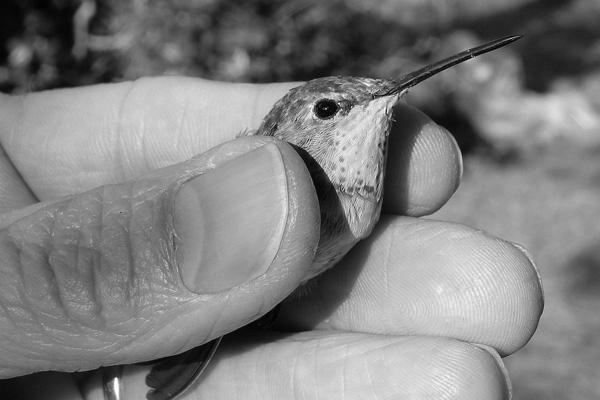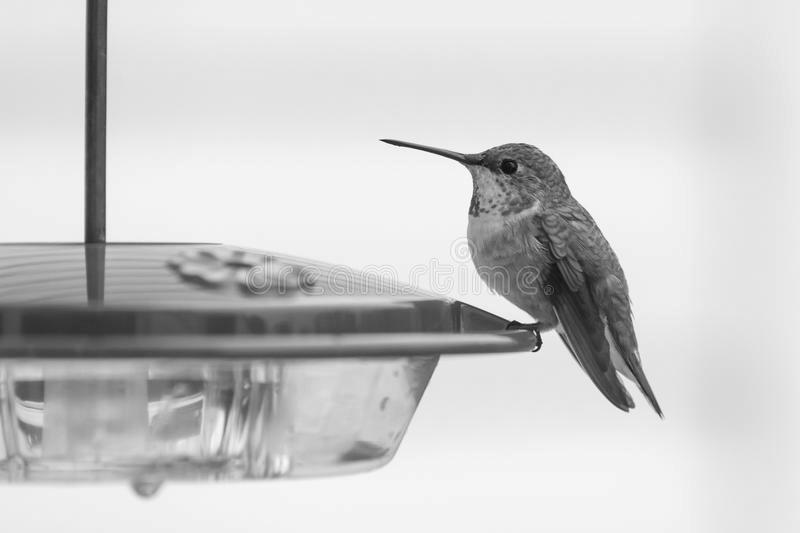The Rufous Hummingbird
a Profile
Rufous Humminbird (Selasphorus rufus)
The Rufous hummingbird is the most widely distributed and most abundant hummingbird in the .
Its breeding range extends from southern Alaska and the Yukon territory, through Oregon and the northern portions of California and as far as southwestern and western Montana.
Hummers that nest in the far undertake a journey of up to 3,000 miles along the Pacific coast from the southern parts of Mexico where most of them winter.
Traveling this great distance takes time and starts in February and extents into with several lay overs that last a week or more to fatten up before they move on.
rusty brown feathers and a flaming gorget set the 3.25 to 4 inch hummingbird apart from all other hummers.
The female Rufous are more subdued with a green back common with other hummers.
Both sexes are fiesty and will challenge interlopers with a chp, chp,chp sound.
Males assert their territorial claims right after their mid-February to arrival on the breeding grounds by means of a «O» or «J» shaped display.
The male Rufous not only will gaurd nesting territories, but also feeding grounds they establish during migrational pauses.
Several females in succession are attracted and visit the display area and the male does his best to impress each one.
Female Rufous does her part as she constructs a nest of plant down held together with spider silk. The outside is adorned with lichens, moss and bark fragments.
Like all hummingbirds, Rufous hummingbirds clutch is usually 2 eggs the size of a navy bean.

Breeding continues until late spring.
The typical nesting habitat are woodlands dominated by conifers that has openings where wildflowers grow.
Fall migration lasts over an extended period of time, some birds may head as early as and extend to October.
Following the Mountains is a favorite path as they take advantage of wildflowers in season and our feeders.
Again Rufous hummingbirds will stop over for a week or more to fatten up before heading out once again.
Scientists are puzzled as to why more and more Rufous hummers migrate to the and southeast United States. records excist for nearly all eastern states.
These birds are called vagrants, but can they really be vagrants if it happens more often?
Similar species:
Adult males can be confused only with ’s Hummingbird. Rufous-backed males are certainly Rufous Hummingbirds, but care should be taken as some Rufous have variable amounts of green on the back and crown.
Females and immatures are easily identified as a Selasphorus by the rufous in the tail. Female and immature Broad-tailed Hummingbirds have less rufous on the inner tail feathers, whitish, not rusty undertail coverts and more blue-green backs, as well as being larger with different calls.
Female and immature Calliope Hummingbirds are smaller with shorter bills and less rusty backs. Rufous and ’s females and immatures are inseparable in the field.
Here are some fast tips.
Length: 3.5 inches
, straight, thin bill
hummingbird

Adult male:
Rufous face, back, flanks, rump, and tail Occasionally variants occur with variably greenish backs and crowns
orange-red gorget
breast
Female/Immature:
back and crown
underparts
throat variably marked with dark streaks (immatures) or central group of red spots (adult females) Rufous wash on flanks.
Immature males similar to adult female but central tail feathers like adult male (rufous with dark tips).
Dark tail with rufous at the bases of the retrices, and white tips on the outer three retrices.
Migration Status: Neotropical migrant
Breeding Habitat: Woodland
Clutch Size: 2
Length of Incubation: 12-14? days
Days to Fledge: 20
Number of Broods: 1, occasionally 2
Diet:

Exclusively:
Nectar
Insects
Range Map
Return to top of page for Rufous Hummingbird
Hummingbird
What is a good hummer feeder
Migration
Hummers Mating
Migration
Return to species profiles
Hummingbird
Gardening For Wildlife Home
Enter your search terms Submit search form
Web
gardening-for-wildlife.com
Enter your E-mail Address
Enter your First (optional)
Then
’t worry — your e-mail address is totally secure.
I promise to use it only to send you Gardening For Wildlife.
